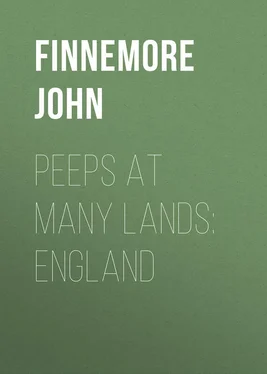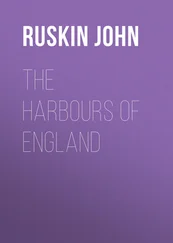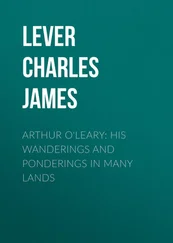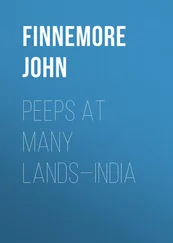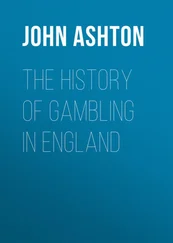John Finnemore - Peeps at Many Lands - England
Здесь есть возможность читать онлайн «John Finnemore - Peeps at Many Lands - England» — ознакомительный отрывок электронной книги совершенно бесплатно, а после прочтения отрывка купить полную версию. В некоторых случаях можно слушать аудио, скачать через торрент в формате fb2 и присутствует краткое содержание. Жанр: foreign_antique, foreign_prose, на английском языке. Описание произведения, (предисловие) а так же отзывы посетителей доступны на портале библиотеки ЛибКат.
- Название:Peeps at Many Lands: England
- Автор:
- Жанр:
- Год:неизвестен
- ISBN:нет данных
- Рейтинг книги:3 / 5. Голосов: 1
-
Избранное:Добавить в избранное
- Отзывы:
-
Ваша оценка:
- 60
- 1
- 2
- 3
- 4
- 5
Peeps at Many Lands: England: краткое содержание, описание и аннотация
Предлагаем к чтению аннотацию, описание, краткое содержание или предисловие (зависит от того, что написал сам автор книги «Peeps at Many Lands: England»). Если вы не нашли необходимую информацию о книге — напишите в комментариях, мы постараемся отыскать её.
Peeps at Many Lands: England — читать онлайн ознакомительный отрывок
Ниже представлен текст книги, разбитый по страницам. Система сохранения места последней прочитанной страницы, позволяет с удобством читать онлайн бесплатно книгу «Peeps at Many Lands: England», без необходимости каждый раз заново искать на чём Вы остановились. Поставьте закладку, и сможете в любой момент перейти на страницу, на которой закончили чтение.
Интервал:
Закладка:
John Finnemore
Peeps at Many Lands: England
IN LONDON TOWN – I
London is the greatest city in the world. How easy it is to say that or read it! How very, very hard it is to get the least idea of what it means! We may talk of millions of people, of thousands of streets, of hundreds of thousands of houses, but words will give us little grasp of what London means. And if we go to see for ourselves, we may travel up and down its highways and byways until we are dizzy with the rush of its hurrying crowds, its streams of close-packed vehicles, its rows upon rows of houses, shops, banks, churches, museums, halls, theatres, and begin to think that at last we have seen London. But alas for our fancy! We find that all the time we have only been in one small corner of it, and the great city spreads far and wide around the district we have learned to know, just as a sea spreads around an islet on its broad surface.
When we read or hear of London, we are always coming across the terms West End and East End. West and East of what? Where is the dividing-line? The dividing-place is the City, the heart of London, the oldest part of the great town. Once the City was a compact little town inside a strong wall which kept out its enemies. It was full of narrow streets, where shops stood thickly together, and over the shops lived the City merchants in their tall houses. The narrow streets and the shops are still there, but the merchants have long since gone to live elsewhere, and the walls have been pulled down.
Now the City is nothing but a business quarter. It is packed with offices, warehouses, banks and public buildings, and it is the busiest part of London by day and the quietest by night. It is a wonderful sight to see the many, many thousands of people who work in the City pour in with the morning and stream out at evening. Every road, every bridge, leading to and from the City is packed with men and women, boys and girls, marching like a huge army, flowing and ebbing like the tides of the sea.
In the centre of the City there is a famous open space where seven streets meet. It is famous for the buildings which surround it, and the traffic which flows through it. All day long an endless stream of omnibuses, cabs, drays, vans, carts, motor-cars, motor-buses, carriages, and every kind of vehicle which runs on wheels, pours by. So great is the crush of traffic that underground passages have now been built for people to cross from side to side, and that is a very good thing, for only the very nimble could dodge their way through the mass of vehicles.
Upon one side of this space there stands a building with blank walls, not very high nor very striking in appearance. But it is the Bank of England, where the money matters of half the world are dealt with! If we went inside we should find that the Bank is built around a courtyard, into which the windows look. Thus there is no chance for burglars to break in, and besides, the Bank is guarded very carefully, for its cellars are filled with great bars of gold, and its drawers are full of sovereigns and crisp bank-notes.
Upon the other side of the busy space stands the Mansion House, where the Lord Mayor of London lives during his year of office. Here are held gay feasts, and splendid processions often march up to the doors; for if a king or great prince visits London, he is always asked to visit the City, and he goes in state to a fine banquet.
A third great building is the Royal Exchange, adorned with its great pillars, and here the merchants meet, and business matters affecting every corner of the globe are dealt with.
But there are two places which we must glance at before we leave the City, whatever else we miss, and these are the Tower and St. Paul's Cathedral. And first of all we will go to the Tower, for it is the oldest and most famous of all the City's many buildings. Nay, the Tower is more than that: it is one of the famous buildings of the world.
For many hundreds of years the grey old Tower has raised its walls beside the Thames, and in its time it has played many parts. It has been a fortress, a palace, a treasure-house, and a prison. William the Conqueror began it, William Rufus went on with the work, and the latter finished the central keep, the famous White Tower, the heart of the citadel. For many centuries the Tower was the strongest place in the land, with its thick walls and its deep moat filled with water from the Thames, and the rulers of England took great care to keep it in their own hands.
To-day it is a show-place more than anything else, and everyone is free to visit it, to see the Crown jewels stored there, and to view the splendid collection of weapons and armour. But after all the place itself is the finest thing to see – to wander through the rooms where kings and queens have lived, to stand in the dungeons and prison-chambers where some of the best and noblest of our race have been shut up, and to climb the narrow winding stairs from floor to floor.
Many of the prisoners of the Tower were brought into it by the Traitor's Gate, a great gloomy archway under which the waters of the Thames once flowed. In those days the river was the great highway of London, and when the judges at Westminster had condemned a prisoner to be sent to the Tower, he was carried down the river in a barge and landed at the Traitor's Gate. Many and many a poor prisoner saw his last glimpse of the outer world from the gloomy gate. Before him lay nothing save a dreadful death at the hands of the headsman.
Outside the White Tower there is a garden, where once stood the block where the greatest of the prisoners were beheaded. Outside the Tower is Tower Hill, where those of a lesser rank suffered; we may still see in the Tower a headsman's block whereon heads have been laid and necks offered to the sharp, heavy axe. As for the names of those who have been executed in the Tower, history is full of them – Lady Jane Grey, Sir Thomas More, Anne Boleyn, Sir Walter Raleigh, Katherine Howard, the Earl of Essex, to name but a few who have suffered there. An earlier tragedy than any of these is the murder of the two little princes, Edward V. and his brother, put to death by command of Richard of Gloucester, Richard Crookback, their wicked uncle who wanted to seize the throne.
From the upper windows of the White Tower we can see the river crowded with ships and steamers and barges, and on a fine day it is a most beautiful sight. But the most striking thing in the view is the Tower Bridge. "This is a new bridge, and it has two great towers rising one on each side, as it seems, to the sky, and the bridge lies across low down between those towers. But when a big ship comes and wants to get up the river under the bridge, what is to be done? The bridge is not high enough! Well, what does happen is this – and I hope that every one of you will see it one day, for it is one of the grandest things in London: a man rings a bell, and the cabs, and carriages, and carts, and people who are on the bridge rush quickly across to the other side, and when the bridge is quite empty, then the man in the tower touches some machinery, and slowly the great bridge, which is like a road, remember, rises up into the air in two pieces, just as you might lift your hands while the elbows rested on your knees without moving, and the beautiful ship passes underneath, and the bridge goes back again quite gently to its place. This bridge has been called the Gate of London, and it is a good name, for it looks like a giant gate over the river."
IN LONDON TOWN – II
It is quite easy to find your way to St. Paul's Cathedral, for the splendid dome of the great church springs high above the highest roof of the City, and the gilt cross on its dome glitters in the sun 400 feet above the pavement below.
Читать дальшеИнтервал:
Закладка:
Похожие книги на «Peeps at Many Lands: England»
Представляем Вашему вниманию похожие книги на «Peeps at Many Lands: England» списком для выбора. Мы отобрали схожую по названию и смыслу литературу в надежде предоставить читателям больше вариантов отыскать новые, интересные, ещё непрочитанные произведения.
Обсуждение, отзывы о книге «Peeps at Many Lands: England» и просто собственные мнения читателей. Оставьте ваши комментарии, напишите, что Вы думаете о произведении, его смысле или главных героях. Укажите что конкретно понравилось, а что нет, и почему Вы так считаете.
